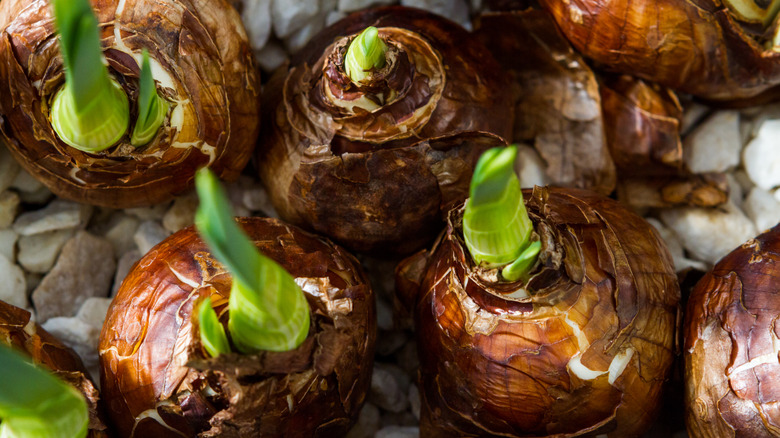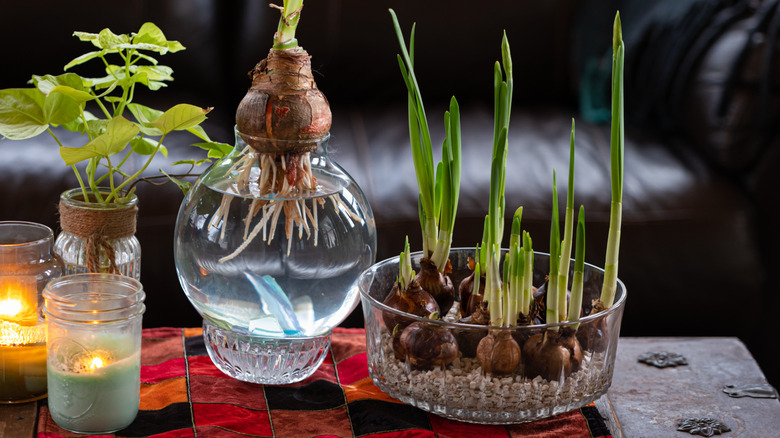Must-Know Tips To Prevent Paperwhite Bulbs From Root Rot
From the intriguing legend behind its scientific name to its beautiful appearance and sweet fragrance, paperwhites (Narcissus spp.) are among some of the most-loved indoor ornamental plants. A common name for several closely related species, paperwhites can instantly cheer the home and transform a gloomy space into one that feels bright and sunny. They can be forced to bloom almost any month indoors. Indeed, paperwhites are one of the only bulbs you don't have to chill before they can grow and flower, making it incredibly easy to grow paperwhites indoors for beautiful winter blooms. That said, there's typically one challenge to overcome when dealing with paperwhites: bulb root rot. Fortunately, bulb root rot is relatively easy to prevent. The trick is not to have too much water in the container or bury the bulbs too deep in soil.
When growing paperwhites indoors, all they'll need is some water — preferably in a tall, narrow glass container — and some smooth pebbles, tumbled glass balls, or marble chips. But the wrong ratio of water to substrate in your container can cause serious issues. If you're going to grow paperwhites indoors, it's important to know what root rot is and how to deal with it before it destroys your plant.
Keep the water level low to prevent paperwhite bulbs rotting
All living things, including plants, need water to survive. Without it, they'll soon wilt and die. However, some plants need a lot of water, and others just a little. Paperwhite bulbs, for example, don't like too much water, but you don't want them to totally dry out either. How close should the bulbs be to the water below? The water should almost touch the bottom of the bulb, but never submerge them. To achieve this proximity, it's advisable to use a transparent container and fill it with water to about 1/4 inch below the base of the bulbs. Without even touching it, the bulbs will sense the presence of the water below and develop roots to reach it.
After several roots spring forth and weave around the pebbles, you can lower the water level slightly to maintain that healthy distance between the bulbs and the water. That's why you should use a glass container; you can consistently monitor the water level. But how about if you're planting paperwhite bulbs in soil? In that case, leave the top half of the bulbs exposed and bury only the very base of the bulbs. If the bulbs are completely buried, the moisture in the soil can make the bulbs rot. Proper drainage is very important for houseplants, including paperwhites, so always ensure the soil is completely dry before adding more water.

